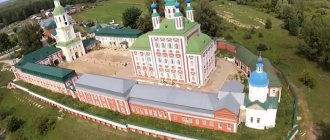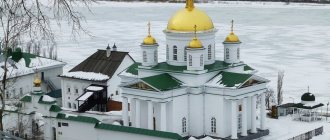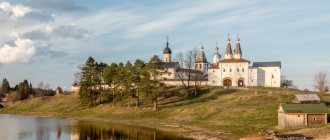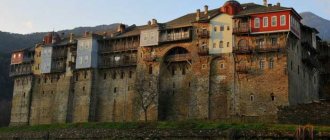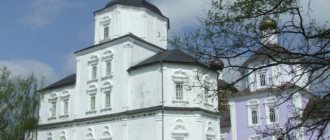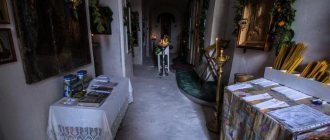Mir
Georgia Monastery of the Thirteen Holy Assyrian Fathers (Dzveli Kanda) Map is loading…
{"format":"leaflet","minzoom":false,"maxzoom":false,"limit":50,"offset":0,"link":"all","sort":[""], "order":[],"headers":"show","mainlabel":"","intro":"","outro":"","searchlabel":"\u2026 \u0441\u043b\u0435\ u0434\u0443\u044e\u0449\u0438\u0435 \u0440\u0435\u0437\u0443\u043b\u044c\u0442\u0430\u0442\u044b","default":"","import-annotation":false,"width ":"auto","height":"350px","centre":{"text":"","title":"""link":"""lat":41.9018338999999997440681909210979938507080078125,"lon": 44.58279850000000266163624473847448825836181640625,"icon":""},"title":"","label":"","icon":"","lines":[],"polygons":[],"circles":[ ],"rectangles":[],"copycoords":false,"static":false,"zoom":8,"defzoom":14,"layers":["OpenStreetMap"],"image layers":[] ,"overlays":[],"resizable":false,"fullscreen":true,"scrollwheelzoom":true,"cluster":false,"clustermaxzoom":9,"clusterzoomonclick":true,"clustermaxradius":80, "clusterspiderfy":true,"geojson":"","clicktarget":"","showtitle":true,"hidenamespace":false,"template":"","userparam":"","activeicon": "","pagelabel":false,"ajaxcoordproperty":"","ajaxquery":"","locations":[{"text":"\u003Cb\u003E\u003Ca href=\"/palomnik/%D0% 9C%D1%83%D0%B6%D1%81%D0%BA%D0%BE%D0%B9_%D0%BC%D0%BE%D0%BD%D0%B0%D1%81%D1%82% D1%8B%D1%80%D1%8C_%D0%A2%D1%80%D0%B8%D0%BD%D0%B0%D0%B4%D1%86%D0%B0%D1%82%D0% B8_%D0%A1%D0%B2%D1%8F%D1%82%D1%8B%D1%85_%D0%90%D1%81%D1%81%D0%B8%D1%80%D0%B8% D0%B9%D1%81%D0%BA%D0%B8%D1%85_%D0%9E%D1%82%D1%86%D0%BE%D0%B2_(%D0%94%D0%B7%D0 %B2%D0%B5%D0%BB%D0%B8_%D0%9A%D0%B0%D0%BD%D0%B4%D0%B0)\» title=\»\u041c\u0443\u0436\u0441\ u043a\u043e\u0439 \u043c\u043e\u043d\u0430\u0441\u0442\u044b\u0440\u044c \u0422\u0440\u0438\u043d\u0430\u0434\u0446\u0430\u0 442\u0438\u0421\u0432\u044f\ u0442\u044b\u0445 \u0410\u0441\u0441\u0438\u0440\u0438\u0439\u0441\u043a\u0438\u0445 \u041e\u0442\u0446\u043e\u0432 (\u0414\u 0437\u0432\u0435\u043b\u0438 \u041a\u0430\u043d\u0434\u0430)\»\u003E\u041c\u0443\u0436\u0441\u043a\u043e\u0439 \u043c\u043e\u043d\u0430\u0441\u0442\u044 b\u0440\u044c\u0422\ u0440\u0438\u043d\u0430\u0434\u0446\u0430\u0442\u0438 \u0421\u0432\u044f\u0442\u044b\u0445 \u0410\u0441\u0441\u0438\u0440\u0 438\u0439\u0441\u043a\u0438\ u0445 \u041e\u0442\u0446\u043e\u0432 (\u0414\u0437\u0432\u0435\u043b\u0438 \u041a\u0430\u043d\u0434\u0430)\u003C/a\u003E\u003 C/b\u003E\u003Chr / \u003E\u003Ca href=\»/palomnik/%D0%A1%D0%B2%D0%BE%D0%B9%D1%81%D1%82%D0%B2%D0%BE:%D0%90%D0 %BD%D0%BD%D0%BE%D1%82%D0%B0%D1%86%D0%B8%D1%8F\" title=\"\u0421\u0432\u043e\u0439\u0441\u0442\u0432 \u043e:\u0410\u043d\u043d\u043e\u0442\u0430\u0446\u0438\u044f\»\u003E\u0410\u043d\u043d\u043e\u0442\u0430\u0446\u0438\u044f \u003C/a\u003E: »'\u041c\u043e\u043d\u0430\u0441\u0442\u044b\u0440\u044c \u0432 \u0447\u0435\u0441\u0442\u044c \u0422\u0440\u0438\u043d\u04 30\u0434\u0446\u0430\u0442 \u0438 \u0421\u0432\u044f\u0442\u044b\u0445 \u0410\u0441\u0441\u0438\u0440\u0438\u0439\u0441\u043a\u0438\u0445 \u041e\u0442 \u0446\u043e\u0432"' \u2014 \u043c\u043e\u043d\u0430\u0441\u0442\u044b\u0440\u044c \u0413\u0440\u0443\u0437\u0438\u043d\u0441\u043a\u043e\u0439 \u041f\ u0440\u0430\u0432\u043e\u0441 \u043b\u0430\u0432\u043d\u043e\u0439 \u0426\u0435\u0440\u043a\u0432\u0438, \u041c\u0446\u0445\u0435\u0442\u0441\u043a\u043e \u0439 \u0438 \u0422\u0431\ u0438\u043b\u0438\u0441\u0441\u043a\u043e\u0439 \u0435\u043f\u0430\u0440\u0445\u0438\u0438; \u043e\u0442\u043a\u0440\u044b\u0442 \u0432 2010","title":"\u041c\u0443\u0436\u0441\u043a\u043e\u0439 \u043c\u043e\u043d\u0430\u 0441\u0442\u044b \u0440\u044c \u0422\u0440\u0438\u043d\u0430\u0434\u0446\u0430\u0442\u0438 \u0421\u0432\u044f\u0442\u044b\u0445 \u0410\u0441 \u0441\u0438\u0440\u0438\u0439 \u0441\u043a\u0438\u0445 \u041e\u0442\u0446\u043e\u0432 (\u0414\u0437\u0432\u0435\u043b\u0438 \u041a\u0430\u043d\u0434\u0430 )","link":"" ,"lat":41.9018338999999997440681909210979938507080078125,"lon":44.58279850000000266163624473847448825836181640625,"icon":""}],"imageLa yers":[]}
42.042417; 43.500998
Georgia, European route E60
Georgia
Telephone.:
+995 790 320 698, +995 558 444 888
Email:
Monastery in honor of the Thirteen Holy Assyrian Fathers
Monastery in honor of the Thirteen Holy Assyrian Fathers
- monastery of the Georgian Orthodox Church, Mtskheta and Tbilisi diocese; opened in 2010.
History[[edit]h2>
The monastery was opened in July 2010 with the blessing of His Holiness the Catholicos-Patriarch of All Georgia Ilia II.
The reason for this was the request of the Assyrians living in Georgia that the Liturgy be held for them in their native Assyrian-Aramaic language.
There are two Temples on the territory of the monastery: in the center of the Church courtyard there is a small Temple in honor of the Dormition of the Blessed Virgin Mary. Many miracles happened in the temple. Many who came to him asking for the healing of serious illnesses were healed. In honor of this blessed Temple, an icon of the Mother of God called “Kandovskaya” was painted.
To the left of the Assumption Church there is a large Temple in honor of the thirteen holy Assyrian Fathers. It was built in 2013 under the leadership of Schema-Archimandrite Seraphim Bit-Kharibi. It was he who directed the youth to the temple and its construction, and brought many people to the Church. The construction of the Temple was financed by pious people - Goderdzi Osipov, Zaali Ilyaev and Lyubov Khoshabaeva.
Monastery of the 13 Assyrian Fathers
- Address:
Georgia, Mtskheta-Mtianeti, E60, village Dzveli Kanda - Status:
active - Denomination:
Georgian Orthodox Church, Mtskheta and Tbilisi dioceses
In Georgia there is a unique monastery of the 13 Assyrian Fathers, which belongs to the Orthodox Church, Mtskheta and Tbilisi diocese. Tourists and pilgrims come here who want to hear services in Aramaic, the language spoken by Jesus Christ himself.
Where is the monastery located and what is it famous for?
The Monastery of the 13 Assyrian Fathers was opened in Georgia in July 2010 at the address: the village of Dzveli Kanda, Mtskheta-Mtianeti region. The temple was blessed by His Holiness the Most Beatitude Katalikos - Patriarch of all Georgia Ilia II. This municipality is home to an Assyrian diaspora numbering more than 2,000 people who wanted the liturgy to be celebrated for them in their native language.
The Monastery of the 13 Assyrian Fathers in Georgia consists of a temple of the same name and a small church of grace, which was consecrated in honor of the Dormition of the Blessed Virgin Mary. Throughout its history, many miracles occurred in it related to the healing of pilgrims from serious illnesses. In honor of this shrine, an icon of the Mother of God called “Kandovskaya” was painted.
History of construction
The first to be erected on the territory of the monastery was the Assumption Church, and then 3 years later the Church of the 13 Assyrian Fathers was built. The work was carried out under the supervision of Schema-Archimandrite Seraphim Bita-Kharibi, with the financing of pious people, including Zaali Ilyaev, Goderdzi Osipov, Lyubov Khoshabayeva. The abbot brought a huge number of pilgrims to the monastery and attracted young people who helped equip the shrine.
The role of the church in the life of the population
Thanks to this, a large number of people baptized in the heretical Assyrian Church of the East were able to accept the Orthodox faith. Today, the monastery of the 13 Assyrian Fathers in Georgia plays an important role in the life of the flock and is its cultural center. There is a spiritual and educational center, its own school, a first-aid post and a dance club. In the evenings, local youth gather near the monastery to show off their talents.
The choir of the monastery of 13 Assyrian Fathers, headed by Schema-Archimandrite Seraphim Bita-Kharibi, deserves special attention. He sings in Aramaic, and his performance in 2021 shocked Pope Francis. Tourists come to the concerts from all over the world, because this is an indescribable action that touches the soul and makes the heart beat several times faster.
In whose honor was the temple built?
The Church of the 13 Assyrian Fathers in Georgia was consecrated in honor of 13 Syrian monastic preachers who came to the country in the 6th century. They spread Christianity and built monasteries. The most famous of them are:
- Zedazeni;
- Shio Mgvime;
- David Gareji.
Features of the visit
The Monastery of the 13 Assyrian Fathers in Georgia is open every day, services are held here at 09:00 (Divine Liturgy) and at 16:00 (All-Night Vigil). Rituals such as weddings, baptisms, the sacrament of confession and funeral services take place only by prior agreement with the rector.
Services here are held in Georgian and Aramaic. In this regard, the Georgian monastery of the 13 Assyrian Fathers is the only one in the entire Orthodox world, therefore coming here and defending the entire service is considered a great honor for all Christian believers.
How to get to the monastery?
From the capital of Georgia - Tbilisi - the Church of the 13 Assyrian Fathers can be reached by car along the Tbilisi - Senaki - Leselidze Hwy/ს1 and E60 road. The distance is about 45 km.
Pilgrimage of Assyrian youth
Oh, Georgia - wiping our tears, you are the second cradle of the Russian muse. Having forgotten about Georgia carelessly, it is impossible to be a poet in Russia. Evgeniy Yevtushenko
Can travel change a person?.. I have asked this question more than once and found the answer on the pages of world history and literature. During the journey, we do not belong only to ourselves, we become one with the team, and the masks disappear, we recognize our fellow travelers from a completely different side, as if we are getting to know them again. Mark Twain discussed this topic in his novel Tom Sawyer Abroad: “I now understand that the surest way to find out whether you like a person or not is to go on a trip with him.” If we talk about my expectations, they were justified.
Our trip to Sakartvelo was not a simple tourist adventure; step by step we formed an international union of Orthodox Assyrians in Russia and Georgia. It is important that our entire trip was accompanied by the icon of the 13 Assyrian fathers, which a year ago was presented to the Old Intercession Church by Schema-Archimandrite Seraphim (Bit-Kharibi). For the first time, representatives of the national youth organization “Children of Assyria” visited Tbilisi, the Kand Monastery and met Father Seraphim personally.
The Kand monastery has long become an Assyrian Mecca, where new pilgrims from neighboring countries and Europe come every year. It is amazing the number of foreigners for whom Canda has become something like the Notre Dame Cathedral in Paris, which is definitely worth a visit when in France. They surprisingly easily combine a morning acquaintance with the shrines of Georgia with night raids on bars and hookah bars in Tbilisi.
During the genocide of 1833, Old Kanda became home to many Assyrians from Iran, Iraq, Turkey and Syria, and today more than 2,000 people live there. The popularity of the Assyrian village is growing every day, largely thanks to the chants and charisma of Schema-Archimandrite Seraphim. All services there are conducted in Aramaic and Georgian, and the spiritual mentor is close and understandable to ordinary people. The media write a lot about him, and social networks are full of video reports from eyewitnesses.
The first day
Everyone was able to pray in front of the icon of the 13 Assyrian fathers
In the courtyard of the monastery, at a small wooden table, we drank iced coffee with Father Seraphim and talked about everyday things. Our guys managed to take a dozen group selfies, some of which are now stored in my phone. Then we went into the temple, everyone was able to pray in front of the icon of the 13 Assyrian fathers. These saints, in a sense, divided the history of Georgian Christianity into “before” and “after”, setting foot on the lands of Iberia in the middle of the 6th century and beginning to preach and organize monastic life.
We lived in a hotel in Tbilisi and for 5 days we became one big and noisy family. Sometimes they quarreled, but the grievances were forgotten over an early breakfast, and in the late evenings they vigorously shared their impressions and drank black wine (this is how Georgians talk about homemade wine from dark grape varieties, which we, visitors, mercilessly call red).
Second day
An ordinary boy, Goderdzi Urgebadze, lived on Tetritskaroskaya Street in Tbilisi. He grew up in the family of a convinced communist, but his father died early and he was raised by his mother. One day, while playing in the yard with the children, little Goderdzi heard the quarrelsome neighbors once again sorting things out, and one of them said: “You crucified me like Christ.” The boy was so interested in the unfamiliar word that he immediately ran to the local church to find out the meaning of this strange phrase. The temple watchman advised him to read the Gospel.
Little Goderdzi did just that, began to read, but, woe for his late party member father, he could no longer stop and after a few years he knew the text of the Gospel by heart.
At the 26th year of his life, he realized that “there is no greater heroism than monasticism,” and took monastic vows, receiving the name Gabriel. Life prepared for him a hundred difficult trials, which he passed only thanks to his inexhaustible faith and love for God.
The elder - St. Gabriel of Athos - was considered by many to be a holy fool and, seeing him on the street, they twisted their finger at his temple.
We heard this story in the Samtavria women's monastery from Father Seraphim
He walked barefoot, picked and sat in a pile of garbage, brought icons and lamps from a landfill for his church, often pretended to be a drunkard, begged with the beggars and spent the night in an earthen pit, and once set fire to a twenty-meter portrait of Lenin hanging on the wall of the executive committee with the words: “Georgians , come to your senses! The Lord said: You shall not make for yourself an idol or any image of it. We have always been Christians. You worship idols." Crazy, what can you do... But behind this madness, the truth was hidden from prying eyes, about which Father Gabriel himself spoke: “Everything bad in a person is just an accident. Never despise people. Even if you see dirty, drunk, swearing bad words. And the image of God is preserved in them, in depths of which, perhaps, they themselves do not know. The enemy smeared this image with dirt, just as one might sully an icon. And if it falls into good hands, it will be cleansed and will shine...”
In the last years of his life, with the blessing of Patriarch Ilia II, Father Gabriel settled in the Samtavro Monastery, which the monk had loved since childhood.
We heard this story in the Samtavri women’s monastery from Father Seraphim - he spent that day with us.
The monastery is connected not only with the life and death of the Venerable Archimandrite Gabriel. It is noteworthy that the relics of one of the Assyrian fathers, Abo Nekressky, who died a martyr’s death, are kept there. The Zoroastrian Persians stoned him to death, taking revenge for the Orthodox monastery built on their lands in the city of Nekresi.
Day three
A few years ago, Where, merging, they make noise, Embracing like two sisters, The streams of Aragva and Kura, There was a monastery. From behind the mountain And now the pedestrian sees the pillars of the collapsed gate, And the towers, and the church vault... M. Lermontov
We quickly climbed the mountain, not noticing the hummocks sticking out of the ground, seeing in front of us only the majestic and ancient temple of Jvari. From the top of the hill you can see the confluence of two rivers and the seemingly painted paths of Mtskheta.
We entered the church at the monastery, and Father Seraphim, standing at the cross erected by the Georgian enlightener Nino, sang one of his chants. It was fascinating, the people in the temple froze for a moment, listening to the schema-archimandrite. The temple was filled with pilgrims from Europe and the Middle East, who were in a hurry to film what was happening.
Having descended into the city, we drank cold tarragon and, maneuvering between the crowds of tourists, walked along the well-groomed streets of Mtskheta.
Then there was food, what would Georgia be without delicious food?! Hot puri, fresh vegetables, shish kebab, khinkali and, of course, wine... Soulful feasts, toasts and songs, we were often invited to visit, and it is impossible to refuse a Georgian. This is probably why there were more feasts than days on our journey.
Georgians have a special attitude towards toasts, turning every raising of a glass into a real ritual. One of the toasts must be addressed to Patriarch Ilia II, whom Georgians perceive as the father of the people.
Day four
On the bank of the Aragvi in baptismal shirts, holding hands, stood two sisters
On the bank of the Aragvi, two sisters stood holding hands in baptismal shirts and wreaths of white wildflowers. Fragile, they entered a wild mountain river and received Holy Baptism. The girls were named Eva and Gabriella.
So on that day, two Assyrian women from Rostov-on-Don became closer to Christ. The sacred moment in the presence of Father Seraphim and the brethren of the monastery gave us joy. It is especially important for me that I was able to become the successor of the sisters.
On the same day, closer to noon, we arrived in Kakheti, at the Bodbe Monastery, where the relics of the enlightener, revered among Georgians, St. Nina, Equal to the Apostles, rest. This is a place where time stops and your heart beats as if you drank a bucket of strong coffee.
In the church, we prayed together for our loved ones, living and deceased, performed a memorial service for those killed in the Middle East for Christ, and venerated the relics of the enlightener.
Day five
On the bank of the Aragvi in baptismal shirts, holding hands, stood two sisters
We prepared in the morning, waited and anticipated what was coming - the night service in the monastery of the 13 Assyrian fathers.
On August 28, Assyrians all over the world celebrate the holiday of Shara Mat Maryam, and many of them come to the village of Old Kanda.
“Prayer is the breath of a spiritual person... through prayer the soul opens itself to the everywhere present Spirit of God and receives spiritual life from Him,” wrote St. Innocent of Moscow.
The spiritual music of that night touched our hearts. Chants in Aramaic and Georgian, the interweaving of male and female voices, cultures and nationalities turned the night service into a real feast of faith.
Georgia gave us the opportunity to feel the unity that was erased in time. The Assyrians do not have a state, but at the same time they managed to preserve their history, symbols, traditions, and most importantly, their faith in Christ. The destroyed empire, brutal massacres and persecution scattered the Assyrians around the world, but despite this, we remain Christians.
Keeping the Faith of the Holy Fathers
Assyrians... Most of us, having heard this word, will probably remember textbooks on ancient history. However, Assyrians are an ethnic group that still exists today. Moreover, their ancestors were among the first to receive the faith of Christ from the apostles. Nevertheless, the Assyrian Church suffered a difficult fate: schisms, deviation into heresy, Uniatism, flight from persecution... But even today the Orthodox Assyrian diaspora has survived, preserving the faith of the holy fathers for 2000 years. In Georgia it numbers about 2,000 people and needs the support and help of brothers in faith.
Father Seraphim with his flock
Twelve Assyrian ascetics
The Monk John of Zedazni and 12 of his disciples: Aviv, Bishop of Nekres, Anthony of Martkob, David of Gareji, Zenon of Ikalta, Thaddeus of Stepantsminda, Ise, Bishop of Tsilkan, Joseph, Bishop of Alaverdi, Isidore of Samtavi, Michael of Ulumbia, Pyrrhus of Brett, Stefan of Hir, Shio of Mgvim.
In Syria, Mesopotamia and Iran, Christianity began to spread already in the 1st century AD, and the Assyrians[1[1]were among the first to adopt it. And in the middle of the 6th century, the Mother of God appeared to the Assyrian ascetic, Saint John of Zedaznia, and commanded him to choose 12 people from his disciples by lot, so that they would go to establish the Christian faith and establish monasticism in Iberia - present-day Georgia. The most ancient lives of the holy Assyrian fathers testify to this: “All of them... taught the people, instructed them in the faith, destroyed the darkness of superstition and destroyed the idolatry and temples remaining in the mountain gorges, instead of which they erected the holy cross and holy temples...”. The holy ascetics founded 13 monasteries, which to this day are the stronghold of the Georgian Orthodox Church.
The fate of the Assyrian Church at this time was dramatic. In the middle of the 5th century, she broke away from the Universal Church, accepting the false teachings of Archbishop Nestorius of Constantinople, who impiously taught about the Mother of God and misinterpreted the nature of our Lord Jesus Christ. The heresy of Nestorius was condemned at the Third Ecumenical Council, and Nestorius himself was anathematized, but the “Nestorians” canonized Nestorius, condemned by the Church, his predecessor and teacher Theodore of Mopsuestia, as well as Bishop Diodorus of Tarsus, who shared their views. The Assyrian Church of the East, which once professed the Orthodox faith, still today venerates them as saints, and their teaching, in particular Christology, is the official teaching of this church.
From the 15th century, Catholicism began to spread among the Assyrians. In the 16th century, after many intrigues and civil strife, a schism occurred that divided the Assyrian Church into two: one part entered into a union with the Pope and began to be called the “Chaldean Catholic Church,” while the other continued to follow the teachings of Nestorius.
But not all Assyrians became apostates. Among these people there were also those who remained faithful to the patristic faith.
Georgia: schemamonk at the head of the diaspora
Most Assyrians now live in the Kurdistan Mountains (Eastern Turkey, Iran, Iraq), some live in Georgia, Russia and other countries. The first Assyrian settlement in Georgia has been known since the 18th century, but the mass migration of Assyrians to this country occurred during the First World War: the policy of the Ottoman Empire was aimed at exterminating Christians, and they were forced to flee.
Father Seraphim with his flock
But even earlier, in the 19th century, a remarkable event occurred. The community of Nestorian Assyrians (led by bishops and clergy), living in the Persian province of Azerbaijan, bordering Russia, west of Lake Urmia, joined the Orthodox Church. This undertaking was called the “Urmia Spiritual Mission”[2[2] and was perhaps the greatest joy of the Church and its greatest success since the schism of the 5th century! Some of the Assyrians who converted to Orthodoxy later moved to Russia, and some settled in Georgia. Orthodox liturgical texts were translated into Aramaic for them, and, thanks to their compact living, they were able to preserve their language and faith.
The Soviet “godless” times turned out to be difficult for the Orthodox Assyrian diaspora: no new clergy were ordained, and none of the old ones remained... People visited Russian and Georgian churches, and found solace there.
This continued until the collapse of the Soviet Union. And in the 1990s, Protestants, Catholics, Nestorians and Chaldeans (Uniate Catholics) poured in from the West. The Nestorians and Chaldeans were especially zealous, based on the argument of preserving national identity, they tried to lure the Assyrians professing Orthodoxy to their faith.
The Georgian Church stood up to protect its flock, opening a spiritual and educational center for Assyrians, and placing at the head of the community an ethnic Assyrian, an Orthodox monk ordained in the Georgian Church - Schema-Archimandrite Seraphim. Thanks to this, many, many did not fall away from Orthodoxy, and those who were baptized in the heretical Assyrian Church of the East again accepted the Orthodox faith.
Father Seraphim in service
Now Orthodox Assyrians have their own temple, where services are conducted in Aramaic and Georgian. In the village of Kanda, where Orthodox Assyrians mainly live in Georgia, a spiritual and cultural Assyrian center will arise in the near future. In addition, a monastery is being built in honor of the 13 Assyrian ascetic fathers. The Orthodox Assyrians - and there are more than 2,000 of them in Georgia - consider their spiritual father, Schema-Archimandrite Seraphim, to be the fourteenth father, who revived and strengthened the Orthodox faith in their midst. Representatives of the Assyrian Church of the East have an extremely negative attitude towards Schema-Archimandrite Seraphim. Many call him a traitor. To this, Father Seraphim says with sorrow that the Assyrian Church of the East - originally Orthodox and once united with everyone - has lost not only doctrinal purity, but also the Sacraments of the Church. Confession, the institution of monasticism - where has it all gone? Why isn't it reborn? The Schema-Archimandrite laments that his blood brothers, who retreated into heresy, actually became iconoclasts: the veneration of icons among them almost disappeared, not to mention the more fundamental distortions concerning issues of faith and spiritual life...
The Orthodox Assyrian diaspora in Georgia is growing and has great prospects. But she needs financial support. If the Chaldean and Nestorian missions are financed from the outside, having support from the West, then this is out of the question in the Orthodox Assyrian diaspora. Everything depends only on the initiative of each Orthodox Christian, on his desire to help the revival of this ancient Orthodox Church. Funds for the construction of a monastery in honor of the 13 Assyrian holy fathers are being collected by the whole world. Construction continues today. Everyone reading these lines can contribute to the revival and strengthening of Orthodoxy, in support of our brothers and sisters in Christ, the Assyrians.
You can contact representatives of the Orthodox Assyrian diaspora and get more detailed information at: https://www.facebook.com/assurian.church?hc_location=stream.
Venerable Gabriel (Urgebadze)
A monk must be firm, defend the truth, because the truth is God Himself.
Venerable Gabriel (Urgebadze)
13 Assyrian Fathers:
1. John of Zadazen (იოანე ზედაზნელი) 2. David of Gareji (დავით გარეჯელი) 3. Abibos of Nekres (აბ იბოს ნეკრესელი) 4. Shio Mgvimsky (შიო მღვიმელი) 5. Ioseb Alaverdi (იოსებ ალა ვერდელი) 6. Anton Martkopsky (ანტონ მარტყოფელი) 7. Tadeoz Stepantsminda (თადეოზ სტეფანწმინდელი) 8. Pyros Bretius (პიროს ბრეთელი) 9. Ise (Iesse) Tsilkansky (ისე წილკნელი) 10. Stefan Khirsovsky (სტეფანე ხირსელი) 11. Isidore Samtavissky (ისიდ ორე სამთავნელი) 12. Michael of Ulumboel (მიქაელ ულუმბოელი) 13 Zenon of Ikaltoi (ზენონ იყალთოელი)
1. David of Gareji lived for a long time in a cave on Mount Mtatsminda, where the Church of Father David and the Tbilisi Pantheon are now located. Later he moved to the Gareji desert and founded the David-Gareji monastery there. (Comm. June 12). On icons he is sometimes depicted with a stone in his hand.
2. Abo Nekresi went to Hereti, to the then large city of Nekresi and founded a monastery on the mountain above the city, which exists to this day and is known as the Nekresi Monastery. The territory at that time was controlled by the Zoroastrian Persians. They tried to convert Abibos to Zoroastrianism, and after failure they stoned him to death. The body of the Saint was buried in Samtavisi, then reburied in Mtskheta. (December 12)
The name Abo has variations - Aviv and Abibos. Sometimes it's confusing. Of all the Assyrian fathers, only Abo is considered a martyr, therefore he is recognized on the icon by the cross in his hand.
3. Shio Mgvimsky founded a large monastic community that exists to this day. The relics of Saint Shio were burned during Soviet times. On icons he is often depicted with smoking coals in his hand.
4. Ioseb of Alaverdi went to Kakheti and built the temple of St. George in the Alaverdi steppe. People began to gather around the temple and this is how the Alaverdi Monastery appeared. Ioseb presented himself in 570 and was buried in the temple, on the site of which the modern Alaverdi Cathedral was later built. Ioseb's grave is located to the left of the altar, near the northern wall. (memory September 15)
5. Anton Martkopsky is known for bringing with him the imprint of the Edessa Savior Not Made by Hands. He settled on the Martkop mountain near Tbilisi, where the village of Norio and the Martkop monastery are now. He founded the Church of the Savior Not Made by Hands and lived on the pillar for 15 years, following the example of Simeon the Stylite. He is buried in the same temple. (January 19) The pillar (tower) on which he lived has been partially preserved to this day. On icons he always holds the icon of the Savior in his hands.
6. Tadeos (Thaddeus) Stepantsminda lived for a long time near Mtskheta and founded a monastery at the foot of Mount Zadazeni. Then he moved to Urbnisi and built there the Church of the First Martyr Stephen, which exists to this day. Then he founded another temple named after Stephen on Mount Tslevi near the city of Kaspi, where he was buried.
7. Piros of Breti founded a monastery (with the temple of St. George) north of the modern city of Gori, near the village of Breti, where he was buried. (May 15) In this temple there is an icon depicting Piros himself, as well as an icon depicting all the Assyrian fathers.
8. Ise of Tsilkan was one of the two who were elected bishops. He was appointed to the department of the city of Tsilkani in the Mukhrani Valley. It is believed that it was he who miraculously created a canal leading from the Ksani River to the village of Tsilkani. Later he preached Christianity to the Ossetians and mountaineers. He was buried in the Tsilkan Cathedral, where his grave is now located. (Comm. December 2). On the icon Ise is depicted wearing an episcopal miter, but without a cross (this makes him different from Abo Nekressky)
9. Stefan of Khirsovsky went to Kakheti (or Hereti?) where in the village of Khirsa he founded a monastery named after the First Martyr Stefan. He was buried in it.
10. Isidore of Samtavisi is known for having founded the Samtavisi diocese, the cathedral of which was the Samtavisi Cathedral. Isidore was buried there.
11. Mikael Ulumboelsky preached in the territory of modern Ossetia and he founded the Ulumbo monastery, which is now located near the Gomi-Sachkhere highway in the Khashuri region. There is a sign from the route.
12. Zenon of Ikaltoi went to preach in the Kakheti mountains, then founded the Ikalto monastery, where he was buried. The grave is located in the central church of the monastery, to the right of the altar.
13. John of Zadazeni himself remained on Mount Zadazeni, where, through his prayers, a source opened. Having received a revelation that death was near, he called Tadeos Stepantsminda and ordered to bury himself right there on the mountain. His death occurred between 557 and 560. The chronological framework of John's acts is between 542 and 560.
On May 7, the Georgian Church celebrates the common day of remembrance of all Assyrian Fathers.
There is a village in Georgia whose inhabitants speak the language of the Savior
Weekly "Palette of the Week"
There is a village in Georgia whose inhabitants speak the language of the Savior Weekly “Palette of the Week”
Few people know that in the Mtskheta region, not far from Tbilisi, there is the village of Kanda, 90% of the population of which are Assyrians, or Aisors, who speak Aramaic - the native language of Jesus Christ.
The historical homeland of these inhabitants of Georgia is Mesopotamia, Mesopotamia, once located between the Tigris and Euphrates. Correspondents of the weekly “Kviris Palitra” (“Palette of the Week”) visited the Kandyan people and got acquainted with the current life of villagers who speak the language of Christ on Georgian land, given, according to legend, as the inheritance of the Mother of God, Blagovest-info reports.
Women sitting on a bench near the local school building explain to journalists in broken Georgian that the language of communication here is Aramaic. The residents of Kanda lack a lot - there is no kindergarten, the walls of the school are so rotten that the children come out dirty, the water supply system is not established, the earnings are pitiful. But the villagers themselves believe that they live no worse and no better than other rural communities throughout Georgia. But they have something that cannot be found in other places.
"Al Qaina" means "water" in Aramaic. This is a century-old spring that has a special historical mission. Not only has it been supplying the village with drinking water since ancient times. About 20 years ago, on this site, the villagers erected a chapel of St. Nina, the enlightener of Georgia. Since then, every Sunday, Kandyans consider it their duty to visit the chapel and light a candle in it.
The main source of income for village residents is crafts. The most famous builders and grinders in Georgia live here. 82-year-old Grisha Atanezov is known to everyone in the area. He is a master of painting on the walls of residential buildings. Grisha Atanezov invites journalists home and shows the walls that he painted in his youth.
According to him, the Icers are said to have come to Georgia from Iran 200 years ago. Some give earlier dates, others later. It’s impossible to say for sure right now.
“Since the founding of this village, everyone here speaks Aramaic. And we don’t think about losing our native speech, because this is the language of Christ,” Uncle Grisha emphasized.
He speaks several phrases in Aramaic. This language is surprisingly sonorous and melodic.
“In the Assyrian sacred books we read that the Almighty spoke to the first man - Adam - precisely in Aramaic. While performing miracles, Christ addressed the Heavenly Father in Aramaic. And how can we allow this language to disappear? Apart from us, no people in the world can be proud to speak the language of the Savior. The Aramaic alphabet, like the Hebrew alphabet, has 22 letters,” said Grisha Atanezov.
However, there is a danger that it will be lost.
“Nobody wants to support its existence. It is necessary to introduce at least one hour a week in our school for the study of Aramaic. So that future generations do not lose their native language. Everyone in the village still speaks Aramaic, but only a few people can read and write,” said Uncle Grisha.
In the village there is the monastery of the 13 Assyrian Fathers, where the abbot is Father Seraphim, an Assyrian by nationality. For many years, services here have been conducted in Aramaic. In the monastery courtyard there are two small churches - the Assumption of the Blessed Virgin Mary and the recently built Church of the 13 Assyrian Fathers. On the walls of the new church there are inscriptions in ancient Georgian and Aramaic.
As the priest said, “About 2,000 Assyrians live in Kanda. Unfortunately, there are no exact statistics, but in total there should be more than 4,000 Assyrians in Georgia. This is a historical, biblical people. With the blessing of Catholicos-Patriarch of All Georgia Ilia II and in accordance with the resolution of the Holy Synod of the Georgian Orthodox Church, we conduct services in our Aramaic language. The number of parishioners is increasing from year to year.”
“We are asking the Georgian Ministry of Education, maybe they will give us the opportunity to introduce Aramaic language training in primary schools. We have teachers. Today, the only guarantor of the preservation of the Aramaic language and traditions is our church in Kanda. It was God's will that we do not have our own state. Our homeland is Georgia. This is where we were born and raised. We are happy that Christ spoke our language. Assyrians from Kutaisi, Zugdidi, Gardabani, and other regions come to us for prayers...” said Father Seraphim.
At the end of the conversation, the abbot of the monastery performed chants in Aramaic for the guests. According to journalists, these were the moments when the conversation with God was conducted in the language of the Almighty. And its unearthly sound separated young travelers from the realities of our earthly existence for a few minutes.
Georgian women's monasteries
The women of Georgia have always been an example of protectors of their kind, guardians of Orthodox values and worshipers of the Lord.
Women's monastery complexes are not much different from men's, except perhaps a little more greenery and interior decorations. Simplicity, austerity of architecture, lack of pomp and luxury are characteristic features of Georgian shrines.
Monastery of St. Equal to the Apostles Nina
The beautiful Bodbe monastery complex grew up on the site of a once small church, erected in the 6th century over the tomb of Equal-to-the-Apostles Nina with donations from King Mirian.
The welfare of the then male monastery was supported by the royal dynasty at the beginning of the 13th century, but from the 13th to the 15th centuries, the time of the Mongol invasion, destruction and devastation, there is no information about this shrine.
Bodbe Monastery in honor of St. Nino
- Bodbe Monastery regains its former glory in the 15th century, but again suffers destruction during Iranian expansion.
- During the dynasty of George XII, they donated church utensils, ancient manuscripts and books to the monastery treasury, while freeing the monks from taxes.
- Until 1837, priests with the rank of bishops and metropolitans of Kakheti lived in the Bodbe monastery complex; they had the right to vote in deciding political and public affairs.
- In the spring of 1889, by decree of the Russian Emperor Alexander III, a convent was founded, which was consecrated by Archimandrite Nikolai (Mikeladze).
The blessed abbess Juvenalia brought the women's shrine to the number of the first monasteries in Georgia, restoring churches, utility rooms on the monastery territory and organizing a large economy. The rich monastery library attracted historians and theologians from all over the world.
From 1924 to 1991, the Georgian shrine was closed. In 1995, a decision was made to restore the Church of St. Nino. The monastic nuns are currently doing their best to:
- restore the shrine;
- rewrite ancient manuscripts;
- paint icons;
- embroidered with gold;
- They conduct extensive subsidiary farming.
Interesting!
Pilgrims come here to pray at the grave of Equal-to-the-Apostles Nina and to plunge into the healing holy spring Ninos Tskaro, located near the church of Zebulon and Sosana, Nina’s father and mother. The main shrine, the icon of the Mother of God “Iverskaya”, which during oblivion was used as an operating table, gives many miracles of healing to those praying.
Khashmiysky Monastery of the Holy Trinity
The fifth-century basilica on the site of the cross erected by St. Nina, currently located in the village of Hashmi, attracts pilgrims and tourists to the Sameba convent as an architectural monument of antiquity.
Built in the 15th century, the sandstone temple covered the ancient shrine, within which stood a carved stone cross. The Kakheti king Levan II sponsored the painting of temple walls with frescoes, the construction of a bishop's house, a tower, a bell tower and other buildings.
Church of the Holy Trinity near Mount Kazbegi in Georgia
In the 18th century, after the Lezgin invasion, the temple was abandoned for almost a century. In 1891, the monastery territories and buildings began to be restored, consecrating it in 1895. Nowadays the Sameba nunnery stands majestically on Katsareti, a large field.
Attention! You can enter the middle of the shrine only with the permission of the nuns who live here and carry out restoration work on their own.
Pilgrims take minibuses to the village of Hashmi, and then walk along a road broken by timber trucks for another 6 km to see a unique architectural monument - the Katsareti Basilica.
Arkhangelsk Monastery
The ancient castle of Prince Tsitsishvili in Samtsevrisi, which has preserved history since the 7th century, has now donated its buildings and territory to the women's monastery. Modern Arkhangelsk monastery buildings grew on the castle foundations, preserving the ancient, almost square tower with thick walls.
The Arkhangelsk Church is an Orthodox shrine with simple paintings that are striking in their uniqueness and unconventionality. Residents of neighboring villages and pilgrims come to the monastery of the Archangel Gabriel for the patronal holiday - November 21, however, it is quite difficult to get there without a special guide.
Mgvimevi Monastery
The little-known monastery complex of Mgvimevi, the cave convent of the Nativity of the Mother of God, preserves the breath of the Golden Age that existed under Queen Tamara. It is difficult to convey the feeling of the first meeting with ancient ancient buildings, literally hanging in the air, clinging to the rocks.
Mgvimevi Monastery
Walking along the steep stairs, winding between the stones, you find yourself in a dark tunnel, through which lies the path to the main temple. The Mgvimevi Cave Church is the only one in all of Georgia; it was not built by human hands, but created by God. In the middle of the cave there is a stalagmite on the right side of the altar.
Next there is a passage to a gallery, at the end of which one can see a basilica covered with a beautiful carved roof. The bell tower is visible nearby, but this is an area closed to tourists.
Interesting! Pilgrims can get to this shrine from Chiatura, but it should be noted that the nunnery is open only until 16.00.
LiveInternetLiveInternet
The monastery and church in the Assyrian village of Kanda (HERE, HERE and HERE - details and music) are completely new. Father Seraphim was sent here about 7 years ago, he took over the monastery and began building a church. “If a person trusts in God,” he said, “he will certainly receive what he needs. It was necessary to build a large church here, because the chapel could no longer accommodate either the monks or the parishioners.” About 2 years ago the paintings were just starting to be done (father Seraphim forgot the artist’s name!)))), now everything is completed, in addition, the icons and all the necessary church utensils are in their places.
David's Prayer
1 Hear, O Lord, the truth, listen to my cry, accept the prayer from the lips of the untruthful. 2 Let judgment come to me from Your presence; let Thy eyes look upon righteousness. 3 You tried my heart, you visited me by night, you tempted me and found nothing; My lips do not depart from my thoughts. 4 In the affairs of men, according to the word of Your mouth, I have kept myself from the ways of the oppressor. 5 Establish my steps in Your ways, so that my feet do not falter. 6 I cry to You, for You will hear me, O God; incline Your ear to me, hear my words. 7 Show Your wondrous mercy, O Savior of those who trust in You from those who resist Your right hand. 8 Guard me like the apple of your eye; in the shadow of Your wings, hide me 9 from the face of the wicked who attack me, from the enemies of my soul who surround me: 10 they are shut up in their fatness, they speak arrogantly with their lips. 11 They surround us now at every step we take; they fixed their eyes to cast me down to the ground; 12 They are like a lion thirsty for prey, like a skim sitting in hidden places. 13 Arise, O Lord, warn them, bring them down. Deliver my soul from the wicked by Thy sword, 14 from men by Thy hand, O Lord, from the people of the world, whose portion is in this life, whose bellies Thou fillest from Thy treasuries; their sons are satisfied and will leave the remainder to their children. 15 But I will look upon Your face in righteousness; Having awakened, I will be satisfied with Your image.
The paintings make a great impression. They are very different from all the new frescoes in the new Georgian churches both in color and composition. In addition, Elder Jonah of Kiev is depicted here, who lived for a whole century and had a vision of the Mother of God in a pillar of fire. (I don't have this footage, but I promise). Image of St. Jonah appeared in the church for a reason. The fact is that Father Seraphim, who in the world bore the name Ichthyander (yes, yes! no more, no less!) before his coming to monasticism, lived for several years in Kyiv and ran a sports school there!
And the paintings in the chapel:
PS It’s a pity that I couldn’t take advantage of Father Seraphim’s invitation and come on the trail. the day of the great funeral prayer, during which they sing in Aramaic in the church (if you followed the links, you already know that the service and chants in the church of the 13 Assyrian fathers take place in the language of Christ) - there was a terrible hurricane. But there’s a big holiday ahead, so I’ll definitely be there and record a video.




